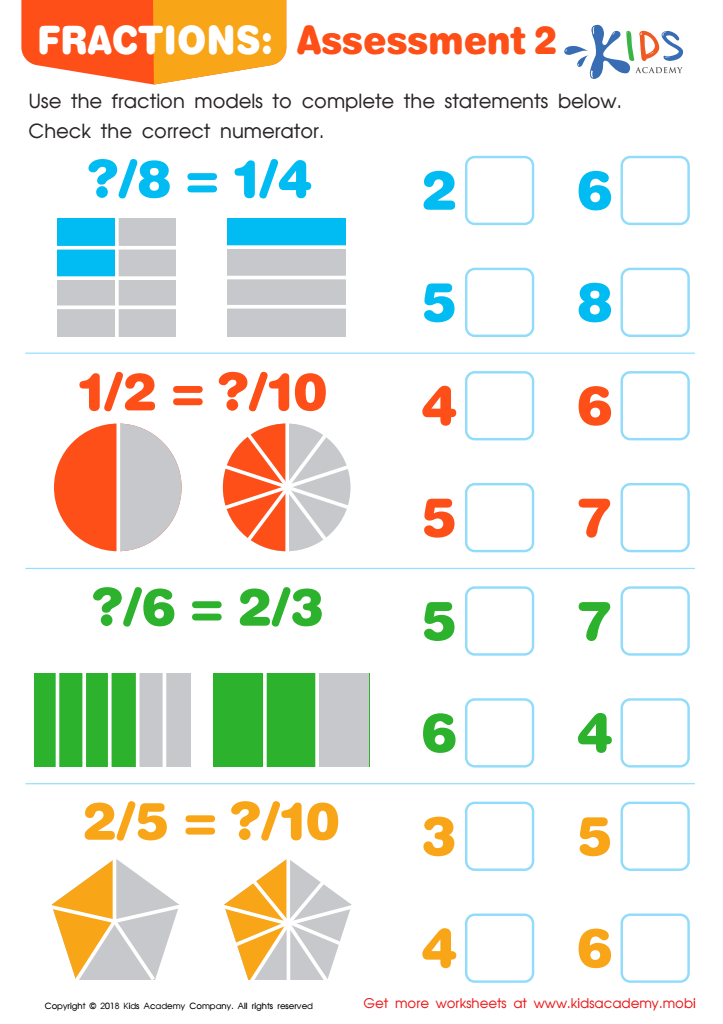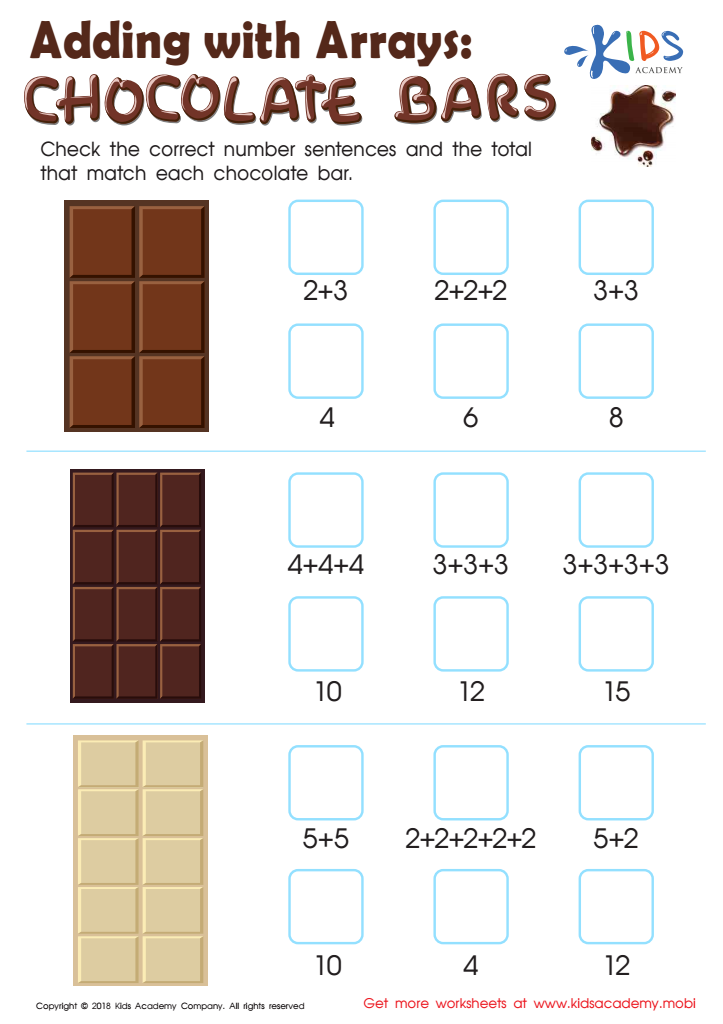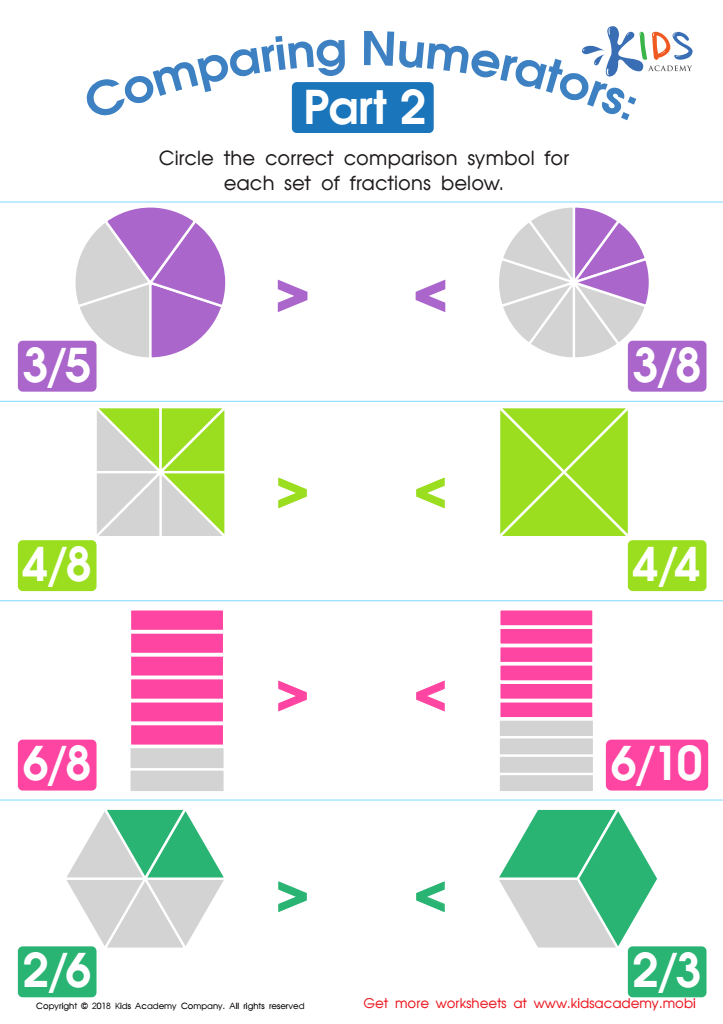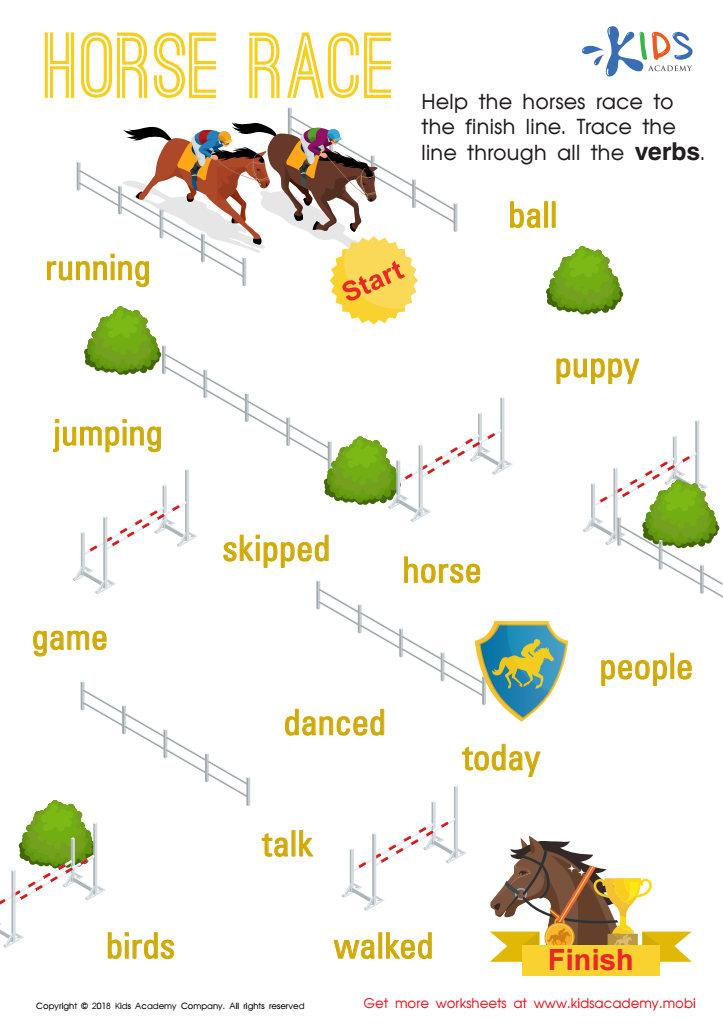Comparing Fractions Normal Worksheets for Ages 3-9
5 filtered results
-
From - To
Discover an engaging collection of "Comparing Fractions Normal Worksheets" designed for children aged 3-9. Our worksheets simplify the concept of fractions, enabling young learners to grasp comparisons through interactive and visually appealing activities. Each worksheet is thoughtfully created to suit different skill levels, helping students master the essential skill of comparing fractions. With a variety of exercises, kids will practice identifying greater, lesser, and equal fractions while building foundational math skills. Perfect for home or classroom use, these worksheets make learning fun and effective. Help your child gain confidence in math with our carefully crafted resources today!


Fractions: Assessment 2 Worksheet


Adding with Arrays: Chocolate Bars Worksheet


Comparing Numerators Part 2 Worksheet


Horse Race Worksheet


Compare Fractions Worksheet
Comparing fractions is a foundational mathematical skill that plays a crucial role in children’s cognitive development, particularly for those aged 3-9. Parents and teachers should care about this concept for several reasons. First, understanding fractions fosters critical thinking and problem-solving abilities, teaching children to analyze relationships between quantities. It aids in their ability to recognize patterns and make comparisons, essential skills across various subjects, not just math.
Moreover, early exposure to fraction concepts enhances numerical literacy, building a strong mathematical foundation that will serve children throughout their education. When children can compare fractions, they learn to express and understand larger mathematical ideas, such as ratios, proportions, and even basic fractions in real-world contexts, such as cooking or dividing resources.
Engaging with fractions in playful and relatable ways—like using visual aids (e.g., pie charts or fraction blocks)—can make learning enjoyable and effective. For parents and teachers, fostering a positive attitude towards math from an early age is crucial to developing lifelong learners. Consequently, encouraging the understanding of comparing fractions nurtures both academic skills and self-confidence in children as they embark on their learning journeys. Investing in these foundational skills ultimately promotes holistic development in young learners.
 Assign to My Students
Assign to My Students






















